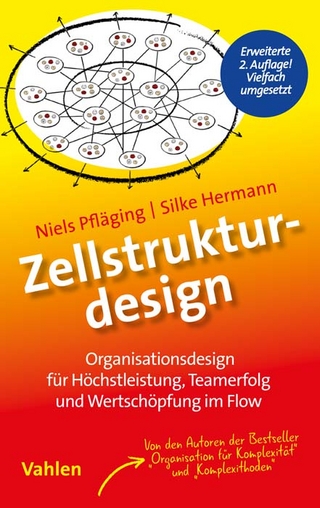
High-Performance Coaching for Managers
CRC Press (Verlag)
978-0-367-74060-3 (ISBN)
Coaching is a necessary skill for managers. It is important as a fundamental part of an organization's talent efforts—including talent acquisition, development and retention strategies. For a coaching program to succeed in an organization, it should be recognized as a useful approach throughout the organization and become part of the fabric of the corporate culture. Performance Coaching for Managers provides an important tool for organizations to use to train their managers on coaching.
This book differs significantly from other books in the coaching market. Many books on coaching cast coaches as facilitators who question their clients (the coachees), helping them to articulate their own problems, formulate their own solutions, develop their own action plans to solve problems, and measure the success of efforts to implement those plans. That is called a nondirective approach.
But this book adopts a directive approach by casting the coach as a manager who diagnoses the problems with worker job performance and offers specific advice on how to solve those problems. While there is nothing wrong with a nondirective approach, it does not always work well in job performance reviews in which the manager must inform the worker about gaps between what is needed (the desired) and what is performed (the actual). The significant difference between what is currently available in the market and what is offered in this book is the authors' collective experience of over 70 combined years of hands-on research and delivery experiences in the Human Resources Development field.
According to the Harvard Business Review (2015), workers generally expect their immediate supervisors to give them honest feedback on how well they do their jobs—and specific advice on what to do if they are not performing in alignment with organizational expectations. When workers do not receive advice—but instead are questioned about their own views—they regard their managers as either incompetent or disingenuous.
Effective managers should be able to offer direction to their employees. After all, managers are responsible for ensuring that their organizational units deliver the results needed by the organization. If they fail to do that, the organization does not achieve its strategic goals. This book gives managers direction in how to offer directive coaching to their workers.
William J. Rothwell, Ph.D., SPHR, SHRM-SCP, CPLP Fellow is a Professor in the Masters of Professional Studies in Organization Development and Change program and also in the Ph.D. program, Organization Development emphasis, of Workforce Education and Development at The Pennsylvania State University. He can be contacted by email at wjr9@psu.edu. He has authored, coauthored, edited or coedited 110 books since 1987. His recent books include Innovation Leadership (Routledge, 2018), Improving Human Performance, 3rd ed. (Routledge, 2018), Evaluating Organization Development: How to Ensure and Sustain the Successful Transformation (CRC Press, 2017), Marketing Organization Development Consulting: A How-To Guide for OD Consultants (CRC Press, 2017), Assessment and Diagnosis for Organization Development: Powerful Tools and Perspectives for the OD practitioner (CRC Press, 2017). Behnam Bakhshandeh is an accomplished business manager, known widely as a dynamic writer, speaker, personal and business coach and trainer. Implementing his skills as a passionate, visionary leader, he produces extraordinary results in record time. Behnam brings his broad experience and successful track record to each project, whether it involves personal development, implementing customer-focused programs, integrating technologies, marketing, redesigning operational core processes, or delivering strategic initiatives. Before designing Primeco Education technology, Behnam led educational programs and later managed operations for a global education organization based in two major US cities. During this seven-year period, Behnam worked personally with tens of thousands of participants. He was accountable for expanding customer participation, training program leaders, increasing sales, and improving the finance department's efficiency and management of the overall operations for the staff and their team of over 400 volunteers, who together served an annual client base of over 10,000. Behnam designed the Primeco Education technology in 2001. Since then, he and his team members have helped countless businesses and individuals not only achieve their goals, but also transform their thinking. His proven methodology is based on his extensive experience in business and human relations. He consistently delivers and works with others to produce results beyond what was predicted or expected. This exceptional rate of business and personal growth is the result of his high integrity, unprecedented teamwork, open communication, and a contagious, unflinching commitment to excellence in all business operations, personal relationships, and professional interactions. Behnam is a shining example of how combining vision and goals with hard work consistently pays off beyond even the highest expectations. His work with businesses has resulted in successful team building, companies that grow through a shared vision, efficient process redevelopment, increased revenues, and work environments that support employee satisfaction and retention.
BUILDING A STRONG FOUNDATION FOR HIGHPERFORMANCE COACHING JOURNEY. 1 The General Concept of Coaching. 2 Performance Coaching. 3 Mindset, Attitude, Behavior, and Performance. PHASE ONE—BUILDING RELATIONSHIP AND RECOGNIZING THE SITUATION. 4 Step 1: How to Establish Relatedness and Building Rapport?. 5 Step 2: What Is the Issue at Hand?. 6 Step 3: What Should Be Happening?. PHASE TWO—ANALYZING THE GAP. 7 Step 4: What Is the Measurable Gap?. 8 Step 5: How Important Are the Gaps?. 9 Step 6: What Are the Root Causes of the Gap?. PHASE THREE—ANALYZING THE SOLUTION. 10 Step 7: How Many Ways Can the Gap Be Closed?. 11 Step 8: What Is the Most Effective Way to Close the Gap?. 12 Step 9: What Are the Consequences of Closing the Gap?. PHASE FOUR—IMPLEMENTATION AND EVALUATION. 13 Step 10: What Are the Damages of Inaction?. 14 Step 11: How to Implement the Solution?. 15 Step 12: How to Evaluate the Successful Implementation?. SUPPORT, MAINTENANCE, SELF-EVALUATION, AND SELF-RATING. 16 How Effective Are You?. Appendix A: Sources for Education and Implementations
| Erscheinungsdatum | 19.04.2022 |
|---|---|
| Zusatzinfo | 67 Tables, black and white; 56 Line drawings, black and white; 56 Illustrations, black and white |
| Verlagsort | London |
| Sprache | englisch |
| Maße | 178 x 254 mm |
| Gewicht | 1170 g |
| Themenwelt | Technik ► Umwelttechnik / Biotechnologie |
| Wirtschaft ► Betriebswirtschaft / Management ► Planung / Organisation | |
| Wirtschaft ► Betriebswirtschaft / Management ► Unternehmensführung / Management | |
| Wirtschaft ► Volkswirtschaftslehre | |
| ISBN-10 | 0-367-74060-5 / 0367740605 |
| ISBN-13 | 978-0-367-74060-3 / 9780367740603 |
| Zustand | Neuware |
| Informationen gemäß Produktsicherheitsverordnung (GPSR) | |
| Haben Sie eine Frage zum Produkt? |
aus dem Bereich


